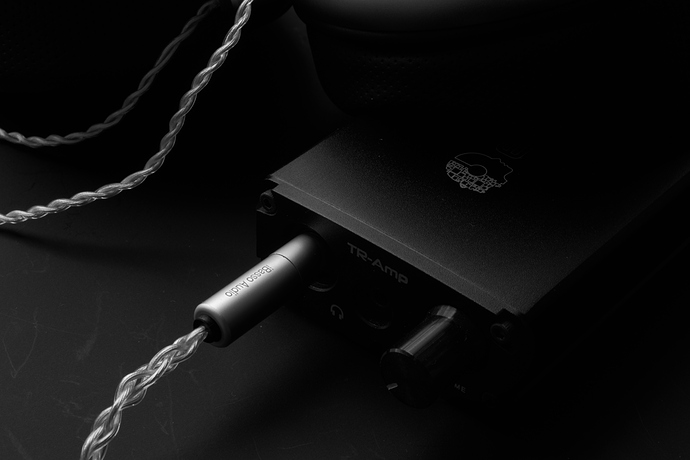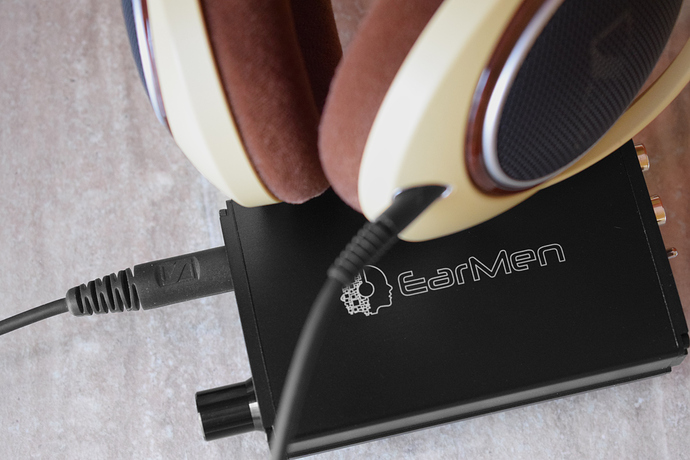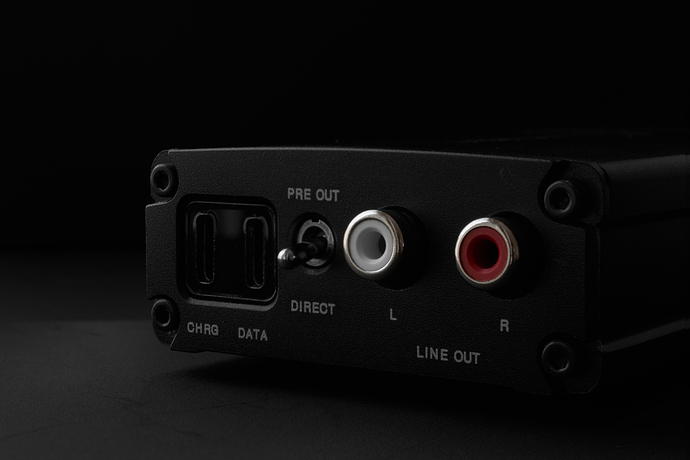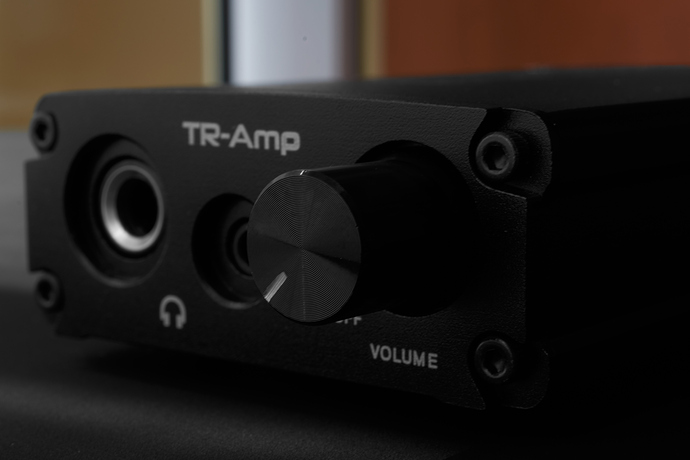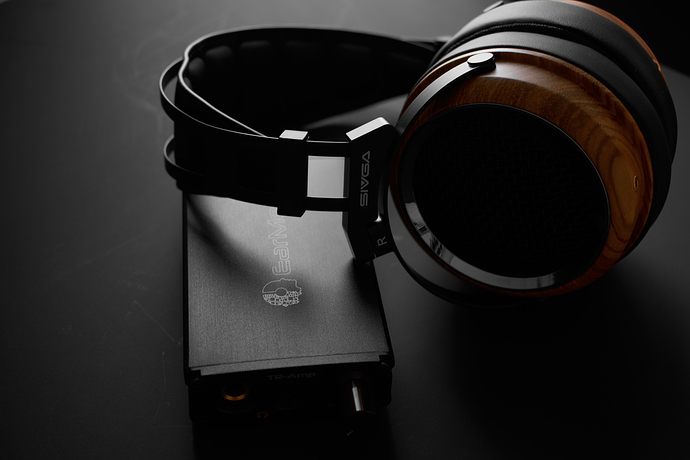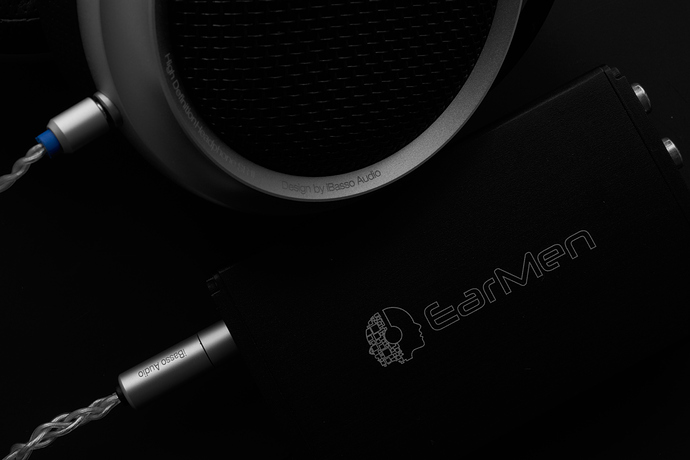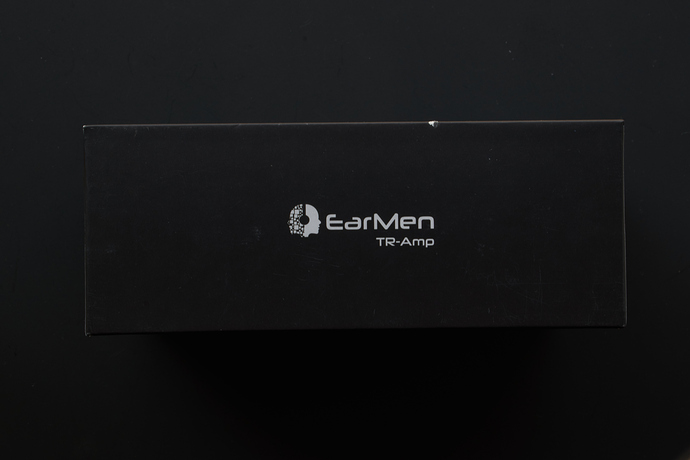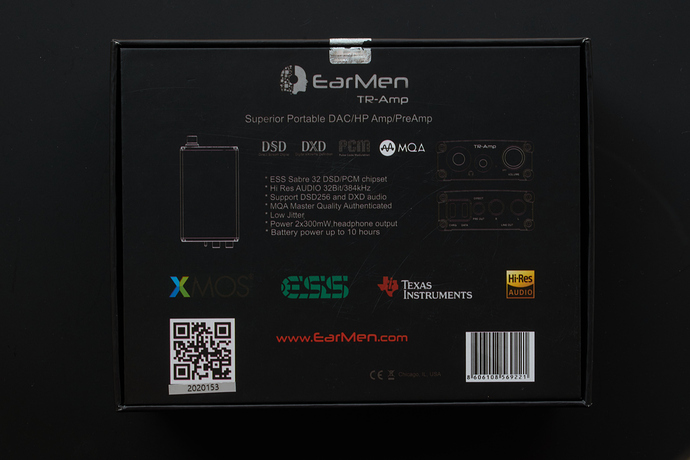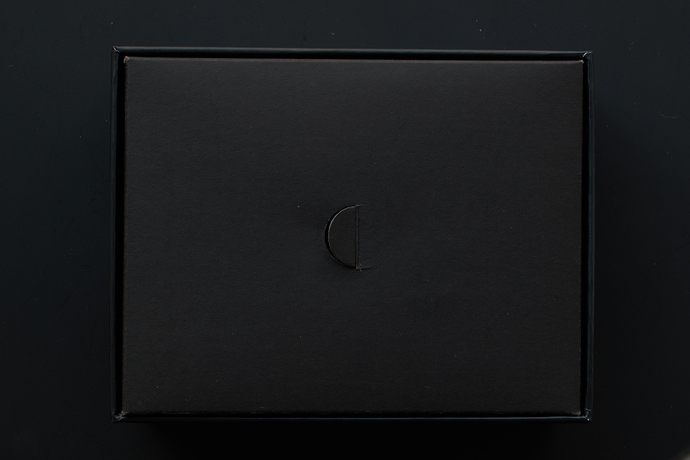Disclaimer & notice
The TR-Amp was a sample provided to me by EarMen. It represents nothing more than a device to me - I am not greedy about free products, I am judging it with honesty and just like a normal product. Those who have read my previous work on websites like Head-Fi and The Headphones Community will know my approach to reviews. I am here because of my passiona for music, not for free stuff. Something to help you understand my approach is - If I do not hear it, I do not write it - meaning that if I have to break away from listening to music by having to listen to the device, there is something wrong. My approach to reviewing is focusing on the effect of the device or performance of a device on music, the focus is not on the device. All this really means is that the subtle or otherwise inaudible things that come from the device are not what I am focusing on, however, I do focus on audible things from the device that can negatively interfere with listening to music.
I am not affiliated nor sponsored by EarMen, neither was there any outside force affecting what was said in this review. Do not take my positive experience the wrong way, everything written in this review is exactly how I feel about this device, it is 100% my honest opinion & experience. I stand behind what was said in this review, I spent several weeks A B testing a single note or instrument for dozens of times - if I heard a difference, I took notes and written the exact thing that I heard. This A B testing can be read in my Sennheiser HD 598 review on Head-Fi, so make sure to check the “Updates with TR-Amp” section in that review. Those are my speculations & observations in real music. You will find it easy to follow since I added very accurate minute marks to the reference songs that I was talking about. This is a very important notice, because, before you get the idea that I am writing poetry without backing up, you should read that specific review - the majority of this review was based on my experience of HD 598 + TR-Amp, so I find this crucial to understand everything said in this review.
Enjoy the review!
All the photography used was made & edited by me.
I would like to start the thread off by posting my full review:
Whether it’s their genius and sneaky model names, or the devices themselves, EarMen is doing it right, and I love it! There is a great challenge in succeeding when you are a fairly new company to the market - it’s hard to reinvent the wheel. Auris Audio is only 7 years old, it’s a fairly young company, yet they did it their own way and succeeded in doing that. If you are not familiar with Auris Audio, you may be asking “What is Auris Audio and why is it relevant to EarMen?”. First, let’s make this clear: Auris Audio is the parent company which mainly specializes in manufacturing high-fidelity and luxury amplifiers, and EarMen is their sub-brand that focuses on more budget friendly (without compromising quality!) portable devices.
Auris Audio is globally recognized for their authentic luxury amplifiers. The combination of leather & wood has become Auris Audio’s trademark - once you see it, you know it’s Auris. Founded in 2013. by Mr. Milomir Trosic, Auris Audio has achieved major recognition and success, well deserved success and recognition. Both Auris Audio and EarMen focus on producing quality products - they prefer quality over quantity. You will notice that they haven’t just released a large quantity of models, but rather focused on putting out fewer quality product ranges (both EarMen and Auris Audio), and this is something that I respect on a high level. How many times did you come across a company with dozens of different models and product ranges of a relatively similar product? I can tell you that the answer is probably more than necessary. Both Auris Audio and EarMen have focused on using the highest quality components from the best companies - Electro Harmonix, Tung-Sol, JJ Electronic, Sabre, XMOS, Texas Instruments, Cirrus Logic, they have it all. Last but not least, Auris is known for manufacturing, assembling, and designing their products in Europe - not only that, but all products from Auris Audio are handcrafted.
What an introduction, impressive isn’t it? Let’s take a closer look at what the TR-Amp has to offer.
Those who read my articles will know that I do not speak upon something if I do not hear it. How can I write about something that I cannot hear? Sound is something you hear, so using nice descriptive words without backing them up is pretty pointless - it is not a physical thing, you cannot touch it or see it, therefore you cannot use descriptive words… it’s not quite objective. TR-Amp has become my favorite portable amplifier, and it’s for a reason. This little guy has a lot to offer, he may be small, but many agree that it’s sound performance is outside of it’s physical size - some went as far to say that it is bigger than bigger amps. It’s small, yet robust. Easy to carry around, yet delivering a very mature sound performance.
ʀᴇꜰᴇʀᴇɴᴄᴇ¹
sᴇɴɴʜᴇɪsᴇʀ HD 598 ᴘᴀɪʀᴇᴅ ᴜᴘ ᴡɪᴛʜ ᴛʜᴇ TR-Amp
Built like a tank
When you pick the TR-Amp up, you know you are holding a well machined and well-built product. You can clearly see that EarMen built it to last. With an all CNC machined aluminum housing, you can be sure that it can withstand some serious abuse (although you should be responsible and take care of your devices!). I was very pleased to see that there wasn’t a single plastic part used for the construction, it greatly contributes as to why it is so robust and solid. All the ports are secured in place; no rattle, no issues. This is a segment that EarMen nailed, and I hope to see more products like the TR-Amp.
What is worthy of mentioning is that it’s designed, made, and produced in Europe. I can say that this is something you will notice straight away, the precision is there. For such a low priced product, it’s pretty nice to see it being entirely produced in Europe.
Design and features
Minimal. Sharp. Clean. Seriously though, there isn’t much to speak upon - a very well designed product that has a great shape. I am also a big fan of the EarMen logo on the top, I am assuming it was laser etched since I couldn’t damage it even when I purposely scratched it with my fingernails. The volume knob has a gorgeous texture, turns very smoothly, and also locks in place nicely (when you turn it on/off). The 4 legs at the bottom are also something that is a neat touch - I am assuming they are made of some type of rubber, and they help the TR-Amp to stay in place. One thing that I did notice is that the LED lights bleeds through the 3.5mm port (Aibo from Head-Fi also noticed this)
TR-Amp is a little guy, but it uses the highest quality components that contribute to it’s big sound. Utilizing the ES9038Q2M SABRE Reference DAC (known to be the highest performance 32-bit mobile audio DAC) and the Texas Instruments TPA6120 amplifier, it supports 32bit/384kHz PCM, DoP DSD256, Native DSD128 and MQA audio formats -
Formal format:
DSD DSD 128 Native / DSD 256 (DoP)
DXD 384/352.8 kHz
PCM Up to 384 kHz
MQA Rendering Up to 384 kHz
On the front you will find two outputs: one 3.5 mm and one 6.3 mm. I am very happy to see this combination, although it would be interesting to see a 2.5 mm (balanced) and 6.3 mm together. Luckily my HD 598 has a 6.3 mm jack, and I always pair them up with the TR-Amp. Now what’s special is that you can use both the 3.5 mm & 6.3 mm simultaneously. This can be quite convenient if you have somebody who wants to join your listening session, but also if you are testing two different headphones.
Battery
TR-Amp has a built-in battery which allows it to be used as a portable AMP/DAC. EarMen claims it hold up 10 hours. I myself am not the type of person who measures minutes or the time I spend on listening to music.. I just listen and enjoy music, but you can definitely find that other people did find the TR-Amp lived up to its claims. The 3700 mAh battery allows you to use the TR-Amp on the go - without wasting your devices battery (your laptop’s/phone’s battery). You will notice that on the back there are two USB C ports: one says “DATA”, and the other “CHRG”. As you can guess, you connect it to DATA when you want to use it, and when you want to charge it, hook it up to the CHRG port. EarMen gave me the official statement that you can use the TR-Amp and charge it simultaneously, but you will need an extra cable to do that. I don’t know how safe it is, but I did notice that the TR-Amp would heat up once it is used like this. I don’t know about you, but 10 hours seems to be more than enough time to enjoy music on the go.
Performance
After trying several headphones, earphones, and IEM’s, I can easily say that TR-Amp is a killer performer. While I would avoid pairing it with any planar-magnetic headphones due to their power hungry nature, TR-Amp is a no brainer for dynamic drivers.
Lows
One of the most fascinating things about the TR-Amp is the ability to extend the dynamic range, especially in the lower range. The “no turning point” was when I first paired the Sennheiser HD 598 with the TR-Amp. Without a quality source, the HD 598 sounded very dull.. and it’s nothing new that it has pretty light bass. TR-Amp was able to bring out the life out of it. It sounded like a completely new headphone. All of a sudden I was able to hear the sub-bass notes, and the mid-bass had more weight and definition.
To get a true understanding of what this little guy is capable, I suggest you carefully read my Sennheiser HD 598 review.
Here is a very self explanatory quote from the review - “Not only is there more space for the lower frequencies to breathe and overall have more space for full-body sound, but there is just so much more definition and presence in the lower notes”
This will particularly change the listening experience for those who primarily listen to music where the bass is present (e.g. electronic music). Though I don’t primarily listen to techno or electronic, “Smoking Mirrors” by Lee Curtiss was where I first heard the impact TR-Amp makes. It was day and night - the absence of the lower notes without it would make the track feel lifeless.
ʀᴇꜰᴇʀᴇɴᴄᴇ²
Bᴀssᴏ SR2 ᴘᴀɪʀᴇᴅ ᴜᴘ ᴡɪᴛʜ ᴛʜᴇ TR-Amp
Mids
Perhaps the most significant region that the TR-Amp has effect on is the mid-range. It’s also one of the more interesting fields - the tonality remains untouched, it’s rather the dynamic range that gets expanded. By this I mean that that both the lower and higher mid-range gets expanded, more frequencies are reproduced. It’s very subtle the way it does this, yet it’s something that you will crave for without it.
The biggest difference is in instruments and vocals. You can imagine how important is to hear the full frequency spectrum of a vocal or an instrument. Something as “subtle” as the absence of the highest/lowest notes can significantly alter the way they sound. Using the Sennheiser cans as my reference again, the way that vocals had sparkle and bottom end extension is something that wasn’t there beforehand. In the same way, instruments like the piano sound better, especially lower and higher notes. Overall, the mid-range is fuller and has the full-body presence.
As you already know, the human voice is a very complex thing - it differs from person to person. It also consists of several different frequencies. Cutting off any of these frequencies will take away from its true tonality. While you can immediately hear the absence of sparkle, you will have a harder time hearing the absence of sub-frequencies from a vocal. It’s definitely easier to notice if a bass guitar doesn’t have enough definition or body, but vocals - not so much. However, once you hear that this subtle frequency is actually there, you will crave for it. What I am trying to say is that once you hear the difference with the TR-Amp (or any other source), you won’t be able to enjoy the music as much without it.
ʀᴇꜰᴇʀᴇɴᴄᴇ³
sɪᴠɢᴀ ᴘʜᴏᴇɴɪx ᴘᴀɪʀᴇᴅ ᴜᴘ ᴡɪᴛʜ ᴛʜᴇ TR-Amp
Highs
Those who have read my previous work will know the importance of sparkle to me. I have an emotional connection & response to higher frequency spectrum, particularly the top top-end (aka sparkle). It’s the element that I have a stronger bond than anything else in music. There is something special about the tingly feeling in your ears, especially in the peaks of vocals & instruments.
While some people may enjoy when there is no edge to music, it’s not quite natural to take the edge away where it was meant to be. The mixing & mastering engineers have a particular sound they want to be there, and additionally removing it with coloring just isn’t natural. Whether it’s Freddie Mercury, Gloria Gaynor, Jeff Buckley, or Céline Dion, having the sparkle in vocals is very important.
In particular, acoustic guitars, electronic guitars, and violins are the instruments where sparkle plays a major role in their timbre. “Soldier of Fortune” by Deep Purple, “Shine On You Crazy Diamond” by Pink Floyd, and “Stairway To Heaven” by Led Zeppelin are all great examples. Mouth harmonicas are also instruments that need to have sparkle for higher notes - “Stop Trying to Be God” by Travis Scott is a perfect example. Stevie Wonder’s harmonica hits the peak several times, and the sparkle of the upper notes should be clean and definitely making your eyes squint when you hear it. It’s safe to say it’s on the edge of being piercing. Removing the upper notes will alternate the authentic sound, especially because it was meant to sound bright.
Any of Jo A Ram’s violin covers will lead you towards the right direction. Her cover of “Still Loving You” is a perfect presentation of both sparkle and talent.
TR-Amp maintains a clean performance. It doesn’t necessarily lean towards the bright side, but it definitely lets the higher notes to be more present - this is something I first heard with the Sennheiser HD 598. It played a major role in listening to vocals.
Soundstage & separation
By now you can see that the TR-Amp makes a big impact by increasing the whole dynamic range. However, I wasn’t expecting the soundstage and separation to improve. Let’s visualize the sound presentation (from headphones) as a box. In a medium sized box you can pack a good amount of information (frequencies and details). If you increase the size of that box, you will have a bigger box. It’s self explanatory, isn’t it? The space for the frequencies is limited to the size of the box. But the question is what you get from the increased size. You can not only pack more frequencies and detail (in other words resolution), but also increase the space between those frequencies in a way that you can distinguish them from each other - essentially, there is more room. The increased space results to higher resolution and better separation. You can conclude that the higher resolution leads to a fuller sound, as though each element has more detail & information.
This is exactly what I experienced when I first paired up my HD 598’s with the TR-Amp. More detail, more room, and fuller sound.
Conclusion
At just $249, the TR-Amp is one of the most essential amps I have come across in this price range. It’s pretty much the perfect amp for those who are looking to make their first purchase in portable sources. Like a Swiss Army knife, it does everything - you have a 3.5 mm input, a 6.3 mm input, can use both of the inputs simultaneously, is built like a tank - no need to worry about damaging the chassis, has a long-lasting battery… and can be charged and used simultaneously (if you have an extra cable). I don’t know about you, but I cannot see what else you could be asking for at this price point. Not to mention that you can also use it as a Pre-Amp.
It’s a high-end device at a correct price. Made in Europe, best chips used - I mean, it has everything. This little guy surprised me quite a lot. It’s a no-brainer for those who will be using dynamic headphones (it works wonders with Sennheiser), but I was proven that it can also drive planar mangetics (Hifiman Deva).
I am seriously disappointed to see this product not being discussed enough - it’s safe to say it’s quite underrated. I used it with 5 different headphones: The relatively easy to drive Sennheiser HD 598, the harder to drive Sennheiser x Drop HD6XX, the planar-magnetic Hifiman Deva, the quite sensitive iBasso SR2, and the Sivga Phoenix with a lower impedance. This shows the versatility of the TR-Amp. Although it’s noticeable cheaper than the mentioned headphones, it still doesn’t fail in its performance in any point. While with the HD6XX and the Deva you will be pushing it to the max volumes, at no point does it distort or anything of that kind - it remains a clean and pure sound performance. I had an experience with a $50 - $100 cheaper AMP/DAC combos, and they struggled to keep up with all these headphones. I won’t drop any names, but I can say this - the cheaper devices gave a horrific performance with the Hifiman Deva. They distorted the sound so much (particularly lower frequencies) that they sounded like the headphone was blown out. I didn’t face anything of that sort with the TR-Amp, which shows both its quality and versatility.
I follow a very simple yet powerful concept - If I don’t hear it, I don’t write it. Surely the case with the TR-Amp was that it completely blew me away, hence the praise. It packs quite a serious performance in a small package (for a reasonable price). I don’t understand why this device isn’t getting any attention, but I did my job to express my experience with it. Considering the versatility, performance, build quality, and features, I can easily call the TR-Amp an easy recommendation in its price range, but also as my personal favorite. However It’s the expansion of the dynamic range as a whole that had me in love with it. There is nothing more enjoyable than being able to hear more detail to music, more frequencies that you didn’t hear before.
Hopefully you learnt something about EarMen and who they are, but also about why I like the TR-Amp so much. I have to give credit where credit is due.
